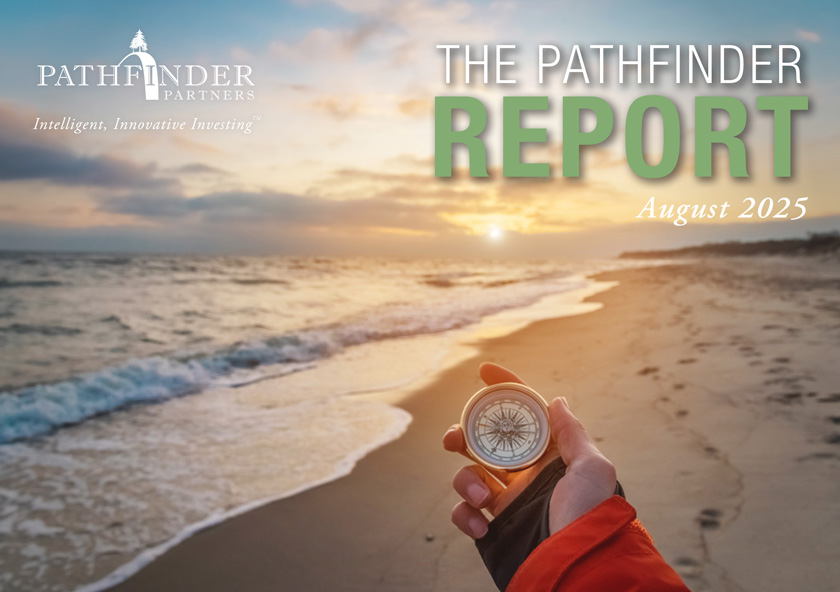Finding Your Path
A Few Tips for Enhancing Investing Outcomes in Different Real Estate Cycles
By Lorne Polger, Senior Managing Director

Real estate has always been one of the most reliable asset classes for building long-term wealth. If you have been around real estate long enough (I’m approaching the 40-year mark now), you know one thing for certain: markets move in cycles. There are highs and lows, and how you invest at each stage can make a significant difference in your returns. But here’s the good news; if you understand the phases of real estate cycles, you can position yourself to succeed – no matter where the market is headed.
The Four Phases of the Real Estate Cycle
Real estate cycles follow four distinct phases, each driven by shifts in supply, demand, and macro-economic conditions:
 Recovery. The recovery phase is at the bottom of the trough when excess construction/new supply from the previous cycle slows down. Recovery is characterized by low demand, high vacancies, and flat or declining rents. Values are often below replacement cost, creating opportunities for savvy investors to buy properties at a significant discount. Indicators include slow job growth, limited new construction, and investor pessimism.
Recovery. The recovery phase is at the bottom of the trough when excess construction/new supply from the previous cycle slows down. Recovery is characterized by low demand, high vacancies, and flat or declining rents. Values are often below replacement cost, creating opportunities for savvy investors to buy properties at a significant discount. Indicators include slow job growth, limited new construction, and investor pessimism.
Expansion. The market improves during the expansion phase. Looking at the broader economy, GDP (economic growth) is rising, job growth is strong, and unemployment is low. Supply and demand are in equilibrium. Demand increases, vacancies drop, and rents begin to rise. Developers, investors, and lenders become more active as confidence returns. New construction starts increase. Indicators include strong economic growth, rising employment, and increased lending activity.
Oversupply. Overbuilding and/or reduced demand create oversupply. Often, an economic shift is the culprit in the disruption of the supply-demand equilibrium. New construction floods the market, outpacing demand. Vacancies rise, rent growth slows, concessions increase and pricing peaks. Indicators include overbuilding, aggressive lending, and record-high asset valuations. In many markets, the multifamily sector has been in this phase for the past 12-24 months; as that new supply continues to get absorbed, we will move into the recovery phase. It is our belief that some multifamily markets are still in the oversupply phase with deliveries peaking in 2026, while others have shifted into the recovery phase.
Recession. In this phase, supply outweighs demand, economic conditions are soft, vacancy rates are high and rent levels are down. Oversupply and weakening demand lead to falling rents and property values. Distress increases as overleveraged owners are forced to sell or are foreclosed on. Indicators include high vacancies, declining property performance, and tighter credit conditions.
How the Real Estate Cycle Impacts Different Asset Classes.
Cycles affect each real estate asset class differently. Industrial, retail and office can be more sensitive to macroeconomic conditions.
- Multifamily: People need a place to live regardless of economic conditions, so economic volatility often does not have a major impact. During economic expansions, however, job growth may cause rents and occupancies to rise, which usually leads to more construction starts. This has characterized the last few years.
- Industrial: Warehouses and distribution centers are more resilient during economic downturns given consistent demand for e-commerce and logistics services. Economic expansion can create strong demand for space and drive-up rents and occupancies, causing construction to increase.
- Retail: Retail continues to evolve as the consumer balances the convenience of e-commerce and the experience of brick-and-mortar stores, That said, retail remains highly correlated with consumer spending and other macroeconomic trends – there’s strong demand for goods during economic expansion when job growth, wage growth and consumer confidence are high and less demand when the consumer’s pocketbook is crimped.
- Office: Demand for office space generally expands when the economy is strong and wanes during economic decline. However, since Covid, hybrid work is causing the supply-demand equilibrium to shift. Newly constructed, well amenitized office buildings are winning new occupants in today’s market, often at the expense of older Class-B and Class-C office buildings.
Strategic Investing by Phase
Recovery. Focus on acquiring undervalued properties and distressed assets. Target markets with strong fundamentals and potential for future job and population growth. Traditional financing may be more limited, so strong relationships with lenders and creative deal structures are important.
Expansion. Hold and improve existing assets as rents and values climb. Development and value-add projects can deliver strong returns in this phase. Secure long-term financing while interest rates are favorable.
Oversupply. Consider selling non-core assets and taking chips off the table. Focus on defensive assets with strong tenant bases. Avoid speculative development as risks of oversupply increase.
Recession. Preserve cash and focus on operations to weather market downturns. Look for opportunities to acquire distressed properties from motivated sellers and lenders. Invest with experienced operators who can stabilize struggling assets.
 Where Are We Now?
Where Are We Now?
Right now, the U.S. real estate market is in a late-cycle transition, from oversupply to recovery. Here is what we are seeing:
- Vacancy rates are up, especially in sectors with heavy new supply like multifamily and industrial.
- Multifamily rent growth has slowed sharply from the record highs of 2021–2022, and in some markets, rents are flat or falling.
- Interest rates remain elevated, which is keeping transaction volumes low and putting pressure on highly leveraged owners.
- Distress is building – more owners are facing refinancing challenges as debt costs remain elevated.
For multifamily investors, occupancy, rent growth/decline, property valuations and supply-demand equilibrium assess the phase we are in. We believe multifamily has recently entered the recovery phase of the cycle in certain markets. More will follow over the next 12-18 months. Investors like Pathfinder – those with experience, cash and patience – should find more opportunities later this year and in 2026, especially if interest rates remain at or near current levels.
Why Timing Matters
Missing the cycle’s turning points can have major consequences. Buying aggressively at the peak (oversupply phase) often leads to diminished returns or losses. Conversely, investors who take calculated risks during downturns often realize the largest gains. While perfect timing is impossible, we try to focus on positioning our portfolio for resilience across cycles by adopting these three primary investment rules:
- Maintain conservative leverage.
- Selectively and thoughtfully pick your geographies and target markets with strong growth dynamics.
- Hold ample cash reserves for unexpected challenges.
Final Thoughts
Understanding real estate cycles is not about predicting the exact top or bottom. It is about recognizing the environment you operate in and making decisions that balance opportunity with risk. By aligning your investment strategy with the broader cycle, you can maximize returns and build a resilient portfolio that thrives through market shifts.
Real estate cycles are inevitable, but they do not have to be scary. When you know where we are in the cycle, you can make smarter decisions – whether that’s buying, holding, improving, or selling. The key? Stay patient, stay flexible, and do not get swept up in the crowd. That is how the best investors win in real estate – cycle after cycle.
Lorne Polger is Senior Managing Director of Pathfinder Partners. Prior to co-founding Pathfinder in 2006, Lorne was a partner with a leading San Diego law firm, where he headed the Real Estate, Land Use and Environmental Law group. He can be reached at lpolger@pathfinderfunds.com.
Share this Article
IN THIS ISSUE
PATHFINDER MULTIFAMILY OPPORTUNITY FUND IX, L.P.
CHARTING THE COURSE
Demographics, High Interest Rates Torpedo Homeownership, Fueling Apartment Demand
FINDING YOUR PATH
A Few Tips for Enhancing Investing Outcomes in Different Real Estate Cycles
GUEST FEATURE
The Power of Retention
ZEITGEIST
News Highlights
TRAILBLAZING
The Ranch, San Diego, CA
NOTABLES AND QUOTABLES
Trust
